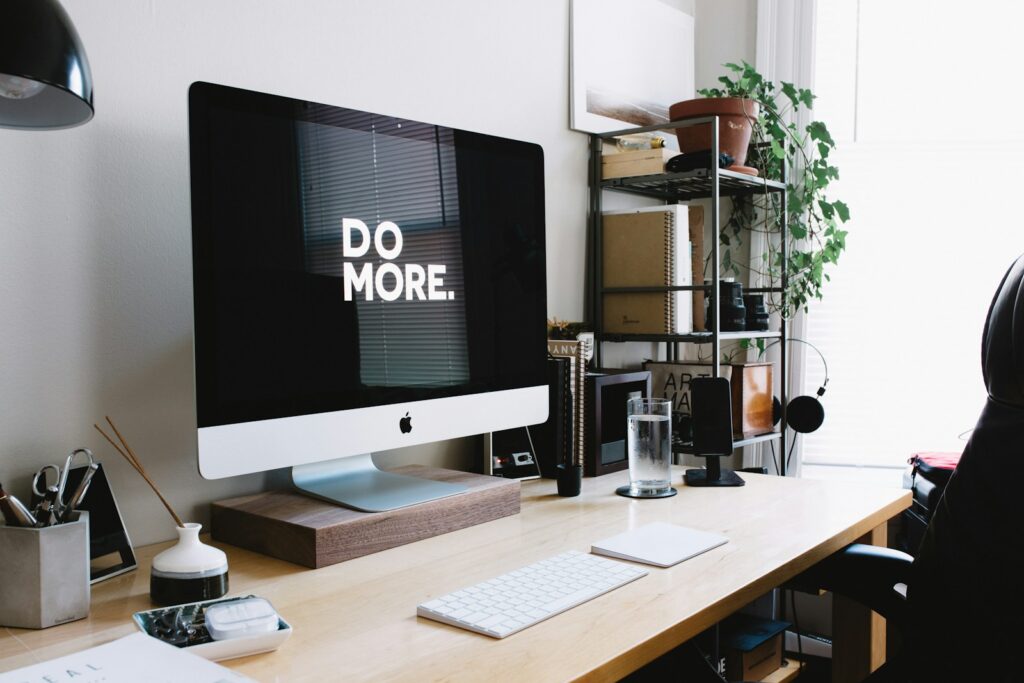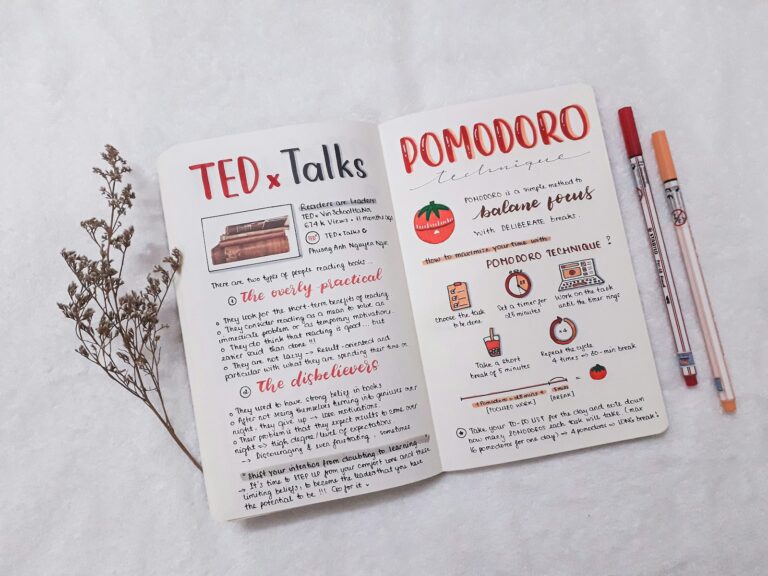Let’s face it: digital clutter is everywhere! Whether it’s a messy desktop, endless email notifications, or an app you downloaded months ago but never use, clutter piles up. It’s not just a small inconvenience—it can leave you feeling overwhelmed, scattered, and less productive. But here’s the good news: decluttering your digital life doesn’t have to be hard, and the benefits are huge. You’ll feel more organized, less stressed, and more in control of your workflow.
In this blog post, we’ll go over 8 practical steps to help you organize your digital world and finally experience a cleaner, more efficient setup. By the end, you’ll feel lighter, more focused, and ready to tackle your day without unnecessary distractions!

Table of Contents
- 1. Declutter Your Desktop and Home Screen
- 2. Organize Your Files and Folders
- 3. Manage Your Email Inbox
- 4. Clean Up Your Apps and Programs
- 5. Tidy Up Your Cloud Storage
- 6. Optimize Your Notifications
- 7. Organize Your Digital Notes and Documents
- 8. Set Up Regular Digital Maintenance Sessions
- Conclusion: Organize Your Digital Life for a Smoother Workflow!
1. Declutter Your Desktop and Home Screen
Your desktop or home screen is the digital equivalent of your physical desk. If it’s cluttered with random files, folders, and shortcuts, it’s like walking into a messy room—it can throw you off from the start! So let’s start with the basics.
- Simplify Your Icons:
The first thing you can do is remove any files, icons, or shortcuts that you don’t use every day. Having too many things on your desktop can make it harder to focus and feel organized. A clutter-free desktop instantly feels lighter and gives you mental space to think clearly.
For example: Let’s say you’ve got dozens of icons—documents from months ago, programs you rarely use, and random screenshots. Start by organizing them into folders. Create categories like “Work,” “Personal,” or “Projects” and drag everything that’s not urgent into these folders. Keeping only the most important items visible will make a huge difference!
- Choose a Minimalist Background:
Your desktop background also affects how cluttered or calm things feel. If your background is too bright or busy, it can be distracting every time you log in. Instead, opt for a simple, calming background—something like a solid color, a nature scene, or a minimalist design.A peaceful background helps create a sense of calm and focus. If you want to add personality, try a soft pastel color or a subtle gradient that’s easy on the eyes.
- Schedule Weekly Desktop Cleanup:
Just like you wouldn’t let papers pile up on your physical desk, make it a habit to clean up your digital desktop. Once a week, take five minutes to clear away anything that’s no longer needed—delete old files, move items into folders, and keep everything organized.Regular decluttering keeps your workspace fresh and functional!
2. Organize Your Files and Folders
Ever spent way too long searching for a document buried in your folders? Yup, we’ve all been there. A messy file system can be a major source of frustration and wasted time. Let’s fix that by creating a simple, intuitive system for organizing your files.
- Create a Folder Structure That Makes Sense:
Think of your files like drawers in a filing cabinet. You wouldn’t just throw papers in without labels, right? The same goes for your digital files. Create clear folders for broad categories, such as “Work,” “Personal,” or “Family,” and within those, use subfolders for more specific topics.
For example: In your “Work” folder, you might have subfolders like “Projects,” “Reports,” and “Meeting Notes.” In your “Personal” folder, you could have subfolders for “Travel,” “Finances,” or “Hobbies.” This way, when you need something, you know exactly where to look!
- Use Consistent Naming for Files:
When you’re naming files, keep it simple and consistent. Use clear, descriptive names so you can find what you need easily. Avoid random or generic titles like “document1” or “final version.” Instead, use names that give you an idea of what’s inside the file.Tip: Include dates in your file names! It’s a great way to keep track of versions and make it easier to search later on. For example, “Project-Report-June-2024” is way more helpful than “Report-Final.”
- Clean Up Your Downloads Folder Regularly:
The downloads folder can turn into a total mess if you let it. Make it a habit to go through it at least once a week, delete anything you don’t need, and move important files to the right folders.Clearing out the downloads folder makes sure your system stays clean, and you won’t lose track of important documents.
Also read: 8 Ways to Make Digital Planning Feel Just Like Paper Planning!
3. Manage Your Email Inbox
Ah, email clutter—the bane of modern life! If your inbox is out of control, it’s not just annoying; it can make you miss important messages and waste time scrolling through irrelevant stuff. Let’s tidy up that inbox!
- Unsubscribe from Unwanted Emails:
Are you getting bombarded with promotional emails or newsletters you never read? It’s time to clean up! Unsubscribe from anything that doesn’t add value. A quick cleanup of your subscriptions will instantly reduce the flood of emails you get each day.You can use tools like Unroll.Me to easily unsubscribe from multiple lists at once. A lighter inbox means less stress and fewer distractions!
- Create Folders for Different Types of Emails:
Setting up folders or labels is a game-changer for organizing your inbox. Create folders for different categories—like “Work,” “Personal,” “Important,” and “To-Do.” You can then drag emails into these folders to keep your inbox clutter-free.Better yet, use filters to automatically sort incoming emails into the right folders, so you can focus on what matters most.
- Archive or Delete Old Emails:
Take a few minutes to archive or delete any old, irrelevant emails that are just taking up space. Once they’re gone, your inbox will feel much lighter and more manageable.And don’t worry—archiving doesn’t delete emails; it just moves them out of your inbox and keeps them safe in case you need them later.
4. Clean Up Your Apps and Programs
Over time, we all end up with apps or programs that we don’t really use, but they’re still sitting there, cluttering up our devices. It’s time to do an app audit!
- Remove Unused Apps:
Go through your phone, tablet, or computer and uninstall any apps or programs that you haven’t used in the last few months. Keeping only the ones that are actually useful helps declutter your device and frees up valuable space.Less clutter on your home screen also means less distraction. Plus, your device will likely run faster without all the extra junk.
- Organize Your Home Screen or App Drawer:
Group similar apps together into folders to keep your home screen tidy. For example, you could create folders for “Work,” “Entertainment,” and “Health.” Keeping everything neatly organized makes it easier to find what you need without scrolling through endless screens of apps.You can even use a minimalist approach by limiting your home screen to just one or two pages of your most-used apps. Everything else can stay tucked away in your app drawer or hidden.
Also read: Kaizen: 8 Small Steps to Big Productivity Wins!
5. Tidy Up Your Cloud Storage
Cloud storage is a lifesaver—until it’s not. If you’ve got a ton of old files or duplicate documents cluttering your cloud storage, it can be just as overwhelming as a messy hard drive. Let’s clear it out!
- Organize Your Cloud Files Just Like Your Local Files:
Just because something’s stored in the cloud doesn’t mean it shouldn’t be organized. Create folders in your cloud storage the same way you did for your local files. Keep things tidy and easy to navigate by sorting files into clear categories.For example, in your Google Drive or Dropbox, create folders like “Work,” “Personal,” and “Archived Projects.” Within those folders, break it down even more—whatever makes sense for your workflow.
- Delete Old or Duplicate Files:
Go through your cloud storage and delete any old or duplicate files you no longer need. This helps free up space and keeps things organized. Many cloud services also give you the option to view your files by size, so you can quickly find large files that are taking up a lot of space.Regular maintenance of your cloud storage ensures that you don’t end up overwhelmed by random documents you forgot about.
6. Optimize Your Notifications
Notifications are great—until they’re not. If your device is constantly buzzing with alerts, it can break your focus and add to your digital clutter. Let’s take control of your notifications!
- Turn Off Non-Essential Notifications:
Not every app needs to send you notifications. Go through your settings and turn off notifications for apps that aren’t critical. Social media, games, and promotional alerts can all go. This way, you’ll only get alerted about the things that actually matter, helping you stay focused.Keeping only important notifications (like messages, reminders, or work alerts) will make your day feel less noisy and chaotic.
- Use Do Not Disturb Mode:
Most devices have a “Do Not Disturb” mode, which you can set during specific times (like work hours or when you’re sleeping). It blocks non-essential notifications while still allowing the important ones through.Using Do Not Disturb helps you stay productive during focused work sessions without being interrupted by constant buzzing.
Also read: Stop Procrastination: 8 Practical Steps to Get Things Done Today!
7. Organize Your Digital Notes and Documents
If you’re anything like me, you probably have tons of digital notes scattered across different apps or devices. Keeping them organized is key to staying on top of your projects and ideas.
- Create Folders or Tags for Your Notes:
Most note-taking apps, like Evernote, OneNote, or even Apple Notes, allow you to organize your notes into folders or tag them for easy retrieval. Group your notes by topics or projects so you can easily find what you need later.For example, create tags like “Work Ideas,” “Personal Goals,” or “Project Notes” and make sure each note gets assigned to its proper place. This keeps everything in order and easy to reference.
- Consolidate Your Notes into One System:
If you’re using multiple apps or platforms for your notes, consider consolidating them into one main system. This helps reduce scattered information and makes it easier to keep track of everything in one place.Pick the app or system that works best for you, and stick with it for all your note-taking needs.
8. Set Up Regular Digital Maintenance Sessions
Just like you wouldn’t let your home or office get cluttered, don’t let your digital space go unchecked for too long. Scheduling regular digital maintenance is key to keeping things organized.
- Schedule Weekly or Monthly Decluttering Sessions:
Once a week or once a month, set aside some time to go through your devices and tidy things up. Delete unnecessary files, clean out your email inbox, uninstall unused apps, and organize your folders. Keeping up with regular maintenance ensures that things don’t spiral out of control again.You can set reminders on your phone or add it to your calendar—just like any other important task.
- Make It a Habit:
The more often you declutter, the less time it’ll take. By making digital decluttering a habit, you’ll avoid the buildup of clutter and maintain a streamlined, efficient digital workspace.A little consistency goes a long way in keeping your digital world clutter-free!
Also read: Supercharge Your Productivity: 10 Morning Habits for Success
Conclusion: Organize Your Digital Life for a Smoother Workflow!
Decluttering your digital life might seem overwhelming at first, but it’s incredibly rewarding. By tackling small areas—like your desktop, files, emails, and apps—you’ll free up space (both mentally and digitally), reduce stress, and boost your productivity. Regular maintenance will help you stay organized in the long run, making your digital life feel lighter, cleaner, and more efficient. Let’s start today and enjoy the benefits of a clutter-free digital workspace!



